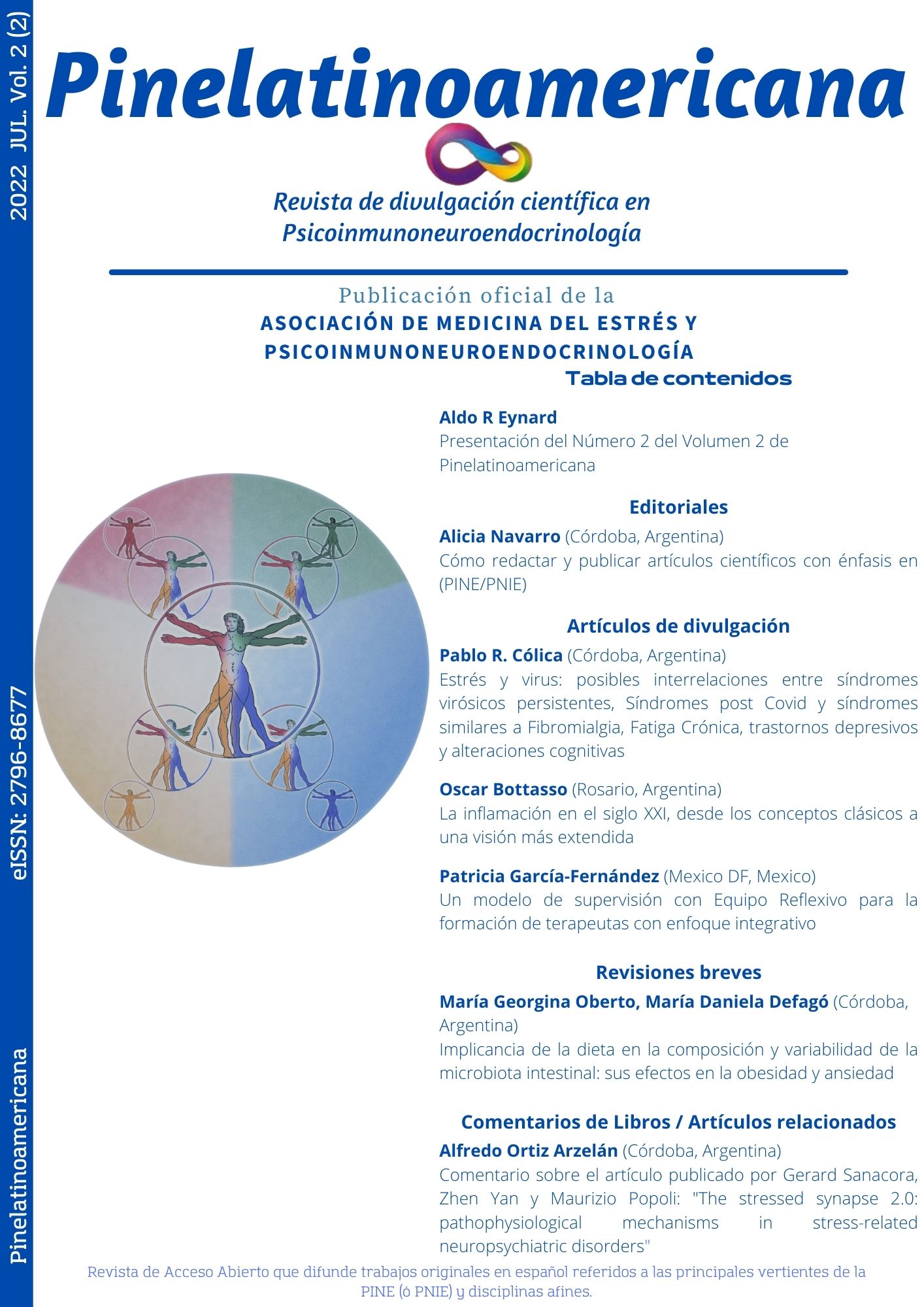Resumo
Comentário sobre o artigo:
Sanacora, G., Yan, Z., & Popoli, M. (2022). The stressed synapse 2.0: pathophysiological mechanisms in stress-related neuropsychiatric disorders. Nature reviews. Neuroscience, 23(2), 86–103. https://doi.org/10.1038/s41583-021-00540-x
Referências
Lakshminarasimhan, H., & Chattarji, S. (2012). Stress leads to contrasting effects on the levels of brain derived neurotrophic factor in the hippocampus and amygdala. PloS one, 7(1), e30481. https://doi.org/10.1371/journal.pone.0030481
McEwen, B. S., & Morrison, J. H. (2013). The brain on stress: vulnerability and plasticity of the prefrontal cortex over the life course. Neuron, 79(1), 16–29. https://doi.org/10.1016/j.neuron.2013.06.028

Este trabalho está licenciado sob uma licença Creative Commons Attribution-NonCommercial 4.0 International License.
Copyright (c) 2022 Pinelatinoamericana

